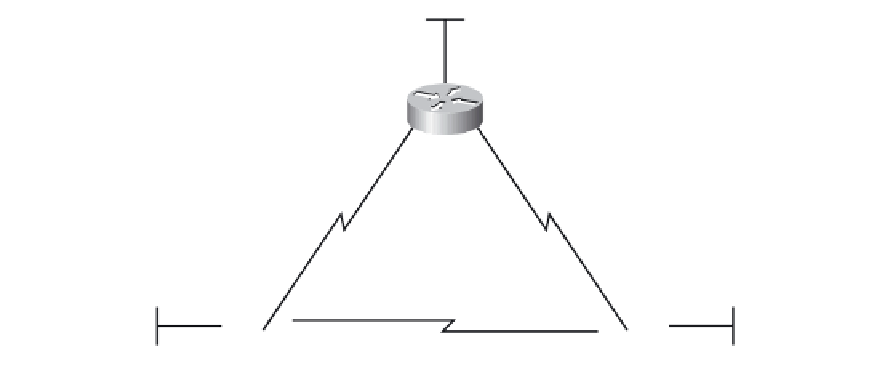Information Technology Reference
In-Depth Information
OSPF Metric
The OSPF metric is called cost. From RFC 2328:
A cost is associated with the output side of each router interface. This cost is configurable by the
system administrator. The lower the cost, the more likely the interface is to be used to forward data
traffic.
Notice that RFC 2328 does not specify which values should be used to determine the cost. The exer-
cises in the following sections cover cost calculation and the two methods for configuring OSPF cost
on a Cisco router.
Calculating the Cost Metric Exercise
In Figure 11-5, note the differences in bandwidth. If OSPF uses the default bandwidth on the serial
interfaces to calculate the cost, RTB will send traffic destined for the LAN on RTC directly to RTC,
and RTC will send traffic destined for the LAN on RTB directly to RTB. However, the path through
RTA is faster.
Figure 11-5
Configure OSPF Cost Metric
192.168.1.0/26
Fa0/0
S0/0/1
DCE
RTA
S0/0/0
192.168.1.252/30
192.168.1.244/30
OSPF
Area 0
T1
T1
S0/0/0
DCE
S0/0/1
192.168.1.128/26
192.168.1.64/26
192.168.1.248/30
Fa0/0
Fa0/0
S0/0/1
RTB
RTC
386 kbps
S0/0/0
DCE
What is the formula that Cisco IOS uses to calculate the cost metric for OSPF?
Cost = 10
8
/bandwidth in bps
What is the OSPF cost of a T1 link?
10
8
/1544000 bps = 64.7, which is rounded to a cost of 64 by the IOS
What is the OSPF cost of a Fast Ethernet link?
10
8
/100,000,000 bps = 1
What is the OSPF cost of a 56K dialup link?
10
8
/56000 = 1785.71, which is rounded to a cost of 1785 by the IOS









